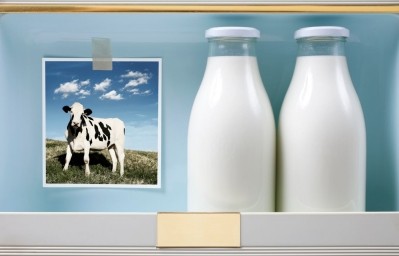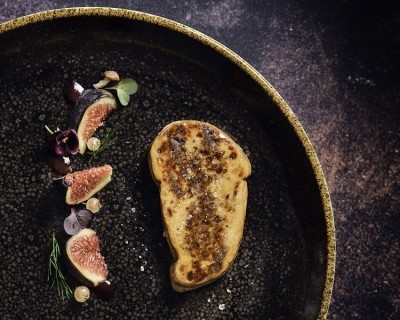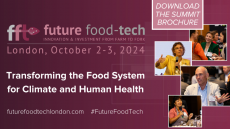Cultivated meat on a farm? Putting farmers at the centre of a new technology

Farmers have traditionally been concerned about cultivated meat. A recent report by the Royal Agricultural University (RAU) in the UK found that despite openness to its opportunities, UK farmers had many concerns about its impact on communities. A note earlier this year to the European Council suggested that cultivated meat was a danger to traditional farming practices. In its decision to ban the production of cultivated meat, Italy’s government cited farmers.
However, what if farmers were not challenged by cultivated meat, but were the ones producing it?
Start-ups in the Netherlands and Germany have developed technology that aims to enable farmers to produce cultivated meat on their land, utilising the abundance of livestock for cells and the primacy of the local approach.
While neither company has regulatory approval in the nascent industry, they both aim to help put farmers at the centre of cultivated meat.
Decentralising cultivated meat
Cultivated meat, as far as it is actually produced, is usually made industrially. Cultivated meat produced on farms is done so in smaller quantities, on a more local level. It is, in the words of the RAU’s report, ‘decentralised.’
“Conventional cultivated meat production aims at large bioreactor vessels in an industrial gigafactory-like complex. All the production is centralised in one large facility. In our concept the main production of cultivated meat happens on the farms,” Alexander Heuer, co-founder and co-CEO of German start-up Meatosys, told FoodNavigator.
Its plug and ply bioreactors are housed in 40ft (12.2m) shipping containers, residing on the premises of individual farmers. The company only covers the steps in the value chain that need specialised lab equipment. The final growth and differentiation will be done on farm.
“This is what we call decentralised: Instead of a single large production facility, our production is distributed across all farms that opt to install our equipment, supported by regional logistics hubs.”
Meatosys will act as both supplier and customer to farmer, supplying nutrient media and refined stem cells to them and then buying the cultivated meat they’ve produced with equipment supplied by the company.
Dutch start-up Respect Farms aims to provide farmers with the means to grow cultivated meat on their farm. It is currently developing a pilot farm in order to demonstrate that this is possible. It has already worked with farmers in Brazil, the UK, Germany, France, Italy and the Netherlands.
“As a system integrator, Respect Farms develops a ready-to-use production system for food producers that want to transition towards more sustainable and animal-friendly meat production,” Respect Farms co-founder Florentine Zieglowski told FoodNavigator.
The benefits of such a decentralised system, she told us, is that it also decentralises risk. “A key difference between cultivated meat at large and at farm-scale is that farm-scale production can be realised today already. Scale-up of a cell cultivation process up to volumes of 50,000 L has never been performed and implies big technical risks. We mitigate these technical risks by using proven volumes: We scale up by scaling out.”
A renewable energy enterprise
Many of the farms in Europe are fuelled by renewable energy. Both Meatosys and Respect Farms aim to work with famers that use renewable energy in order to ensure that their cultivated meat bioreactors are powered sustainably.
In 2020. 43% of Dutch farmers used solar panels, and this is only growing. “A big part of Dutch farmers focuses on renewable energies as part of a diversified and stable business. And we have seen in the last years that stable and independent energy supply will be a key factor for a more resilient and sustainable food production system,” Respect Farms’ Zieglowski told us.

In Germany, too, a large portion of the farmers use renewable energy, making it easier for Meatosys to utilise this for its cultivated meat production systems.
According to Heuer, the company’s production can be nearly 100% fuelled by renewable energy. In Germany, he told us, you’d be ‘hard pressed’ to find a farmer that doesn’t use either solar, wind or biogas energy sources.
“We consume electricity right where it is produced, reducing the need for grid upgrades and offering a cost-reduction opportunity for farmers who wish to invest in alternative energy sources,” he told us.
What about the costs?
According to the RAU’s report, farms producing cultivated meat would cost an average of 30% more than large factories doing the same thing. While this research was done with the UK’s farms in mind, it nevertheless suggests significant challenges.
However, there are also benefits which may in fact help keep costs down, believes Meatosys’ Heuer.
“Most calculations in this regard assume that production in large centralised volumes will work without issues,” he told us. In fact, there are unique problems to large scale factories where the material involved is organic. In other words, “biology does not necessarily play by the common rules of scaling. You cannot just scale up the reactor size and expect things to work the way they did before.”
Firstly, it’s difficult to keep different operating parameters under control in large vessels such as this.
What's next for cultivated meat?
Cultivated meat is yet to see regulatory approval in most markets. We recently saw its first application for approval in the EU, by French cultivated foie gras company Gourmey. This came a year after Israel’s Aleph Farm’s submitted the first applications seen in the UK and Switzerland.
However, as of yet the only market approvals are in Singapore, Israel and the US. The industry has seen progress, but most consumers have yet to see cultivated meat.
Furthermore, the pressure at the bottom of a large vessel significantly exceeds that within an animal’s womb. This, he suggested, may lead to uncontrolled differentiation in the cells (differentiation is when a stem cell becomes a specific type of cell).
Lastly, if you’re using a very large tank of cell culture media and it goes bad, that’s far more money down the drain than if you’re using a much smaller amount, as on a farm.
Both Respect Farms and Meatosys are looking to bring down the cost of the cell culture media, one of the most expensive components of producing cultivated meat, by sourcing ingredients from alternative places.
“We are actively investigating all means to bring down the cost of nutrient media and are especially focused on involving farmers even more in the value chain. We see a lot of potential to source many ingredients from farmers and thus create a circular economy,” Meatosys’ Heuer told us.
Existing crops on the farm, according to Respect Farms’ Zieglowksi, can be utilised in the production of cultivated meat. “We focus on crops relevant to the agricultural sector and side-streams connected to the agricultural sector as to a) create a more circular and sustainable bioprocess and b) to explore all opportunities with regards to the potential business model of farmers.” These crops can be used as raw materials for cell feed.
The importance of farmers
“We leave no one behind, especially the people that have been feeding humanity for thousands of years,” Meatosys’ Heuer told us. Farmers, the pillar of the food system, are integrated into the supply chain more extensively through methods such as this one.
Heuer stressed that his company does not want to do away with animal farming, but simply create more options for farmers. “Animal farming is part of a much larger ecosystem and interconnected to many other aspects far beyond just ordinary meat production. Our farmers still have animals, just less of them as our technology acts as a multiplier.”
Nevertheless, cultivated meat production is, he suggested, ‘more economically viable’ than conventional animal herding. One aspect of this is changing animal welfare regulation in Germany, which, he told us, means that farmers regularly have to rebuild their floor plan to provide animals with more space, which is a costly process. In cultivated meat production, it is ‘highly unlikely’ the same will happen. Lastly, in cultivated meat zoonotic diseases are less of a risk factor.
The method of production does not just provide a benefit for farmers, but is benefitted from them. Farmers, for example, have a different knowledge set to scientists and engineers. The farmers’ and scientists’ knowledge complements each other.
“Our employees are scientists, not food producers. And vice versa, farmers are food producers, not scientists,” Respect Farms’ Zieglowksi told us.
Farmers understand different forms of agriculture, such as regenerative agriculture and organic agriculture, that scientists may not. Their customers often trust them. Like Meatosys, Respect Farms aims to ensure that farmers are not left out of the supply chain that they have helped sustain for so long.




























